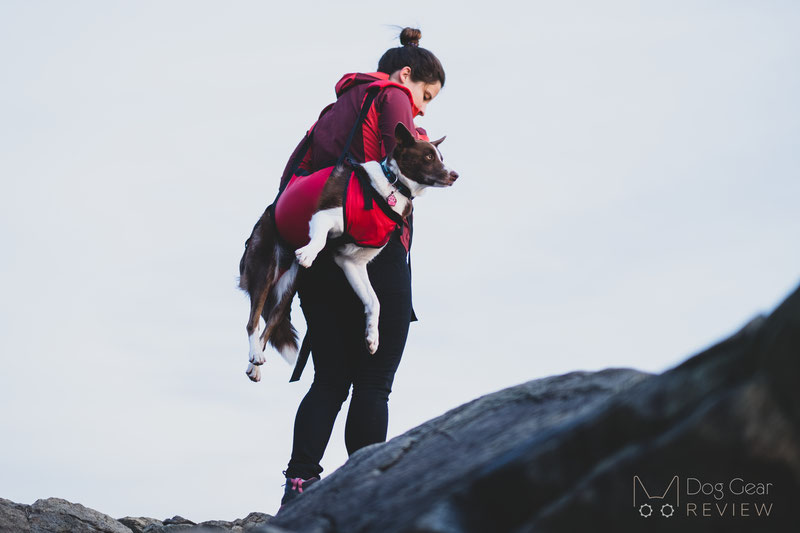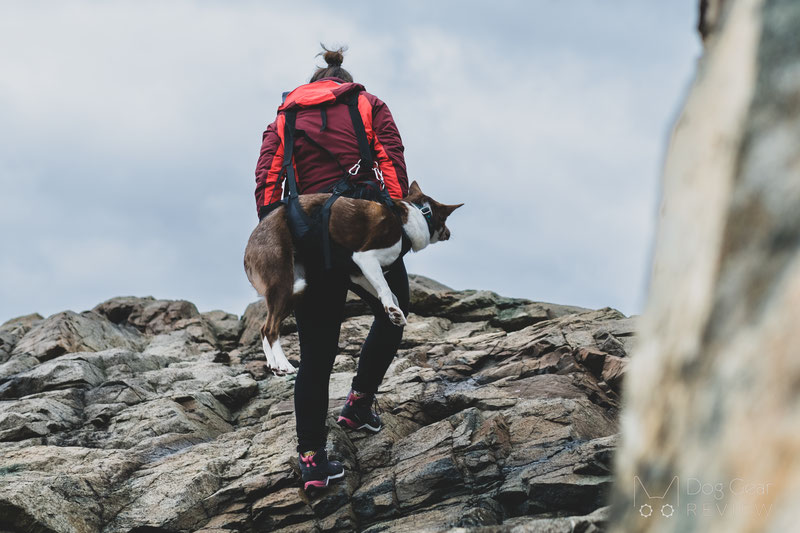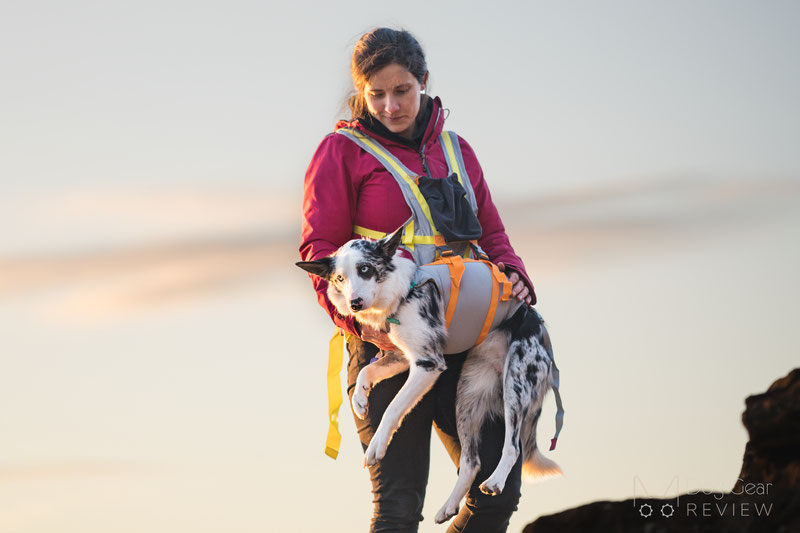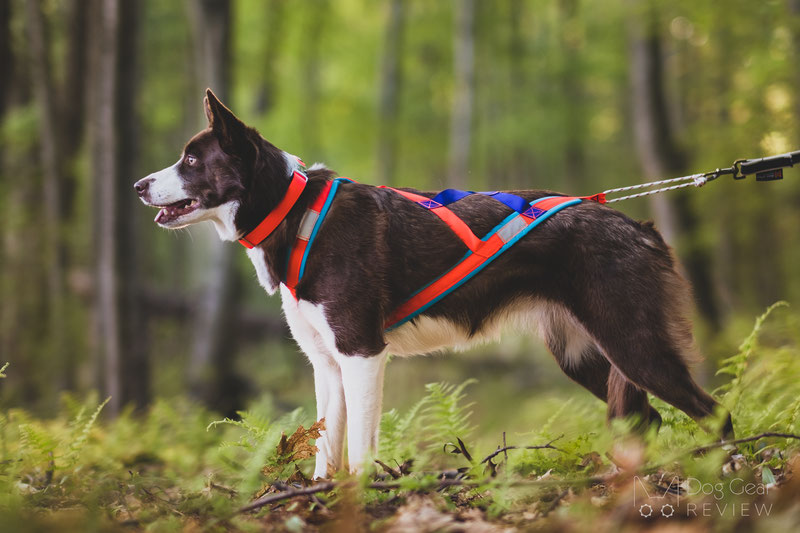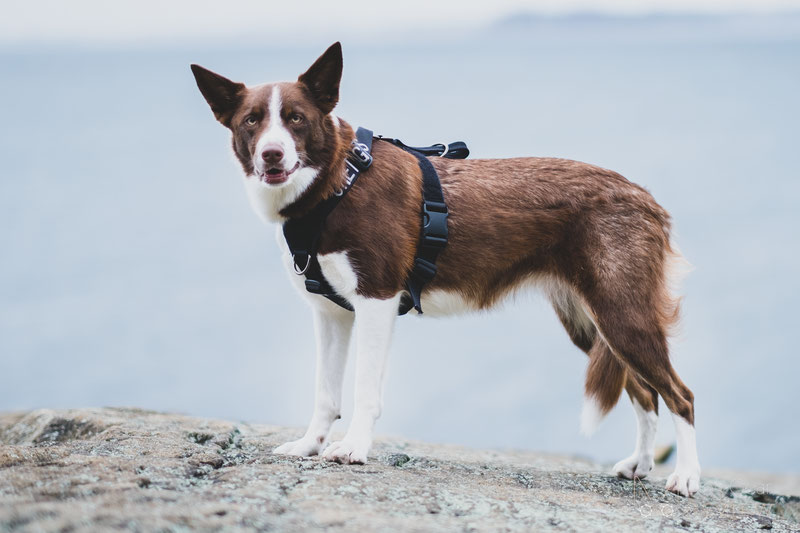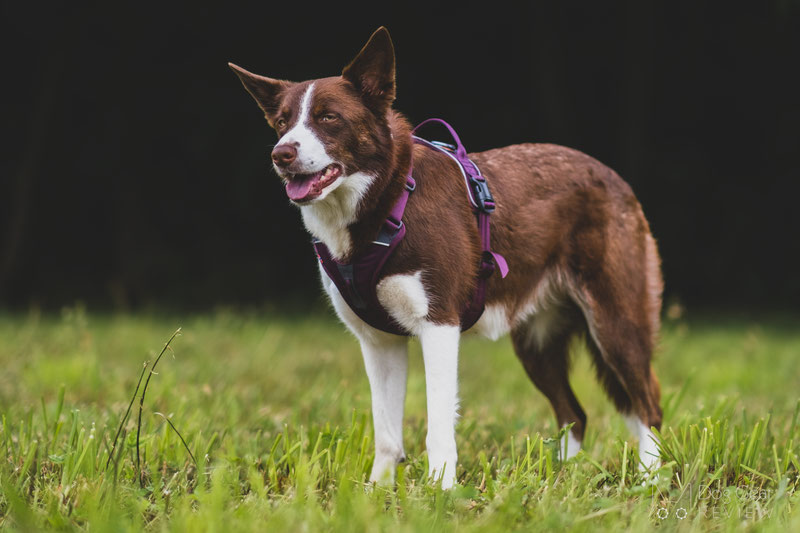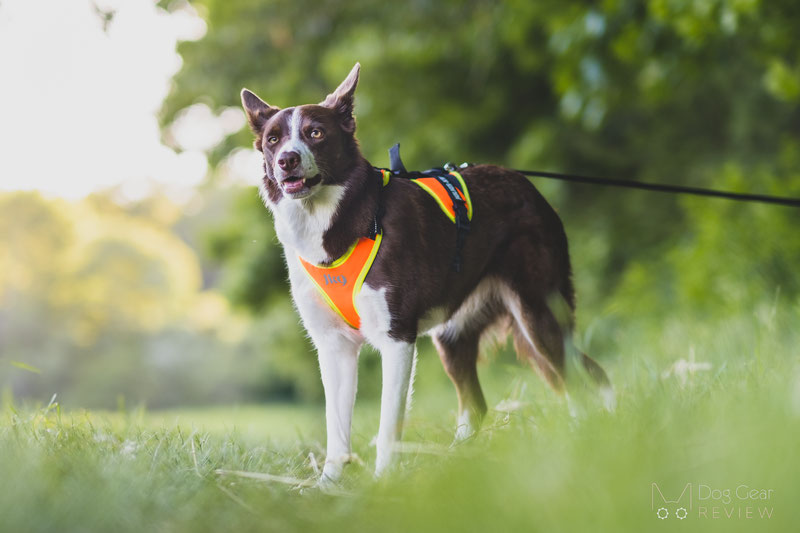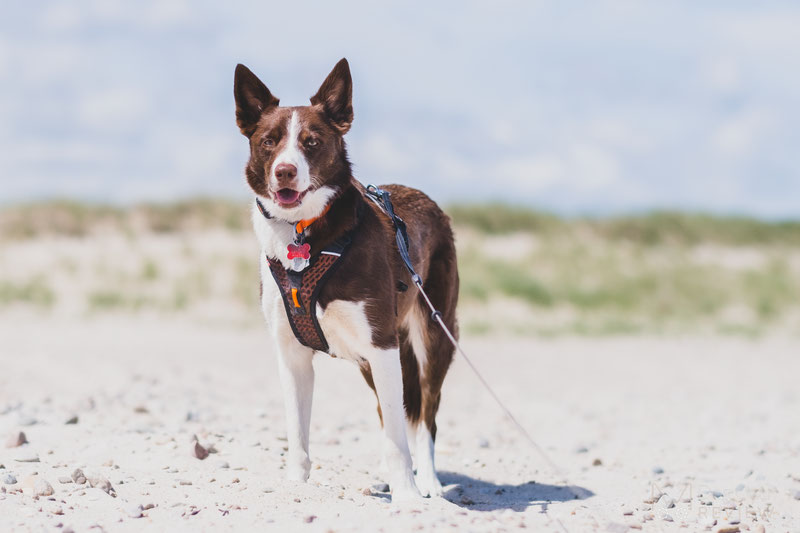About Mountain Dogware
The Pack-a-Paw rescue harness was designed in the White Mountains of New Hampshire by Stefen Keith. He is a trail runner and hiker who was concerned about carrying out his dog in an emergency after hearing about a dog who broke his leg on a trail and needed to be left behind while the owner tried to get help. He created Pack-a-Paw, so no one else needs to face this hard decision.

About the Mountain Dogware Pack-a-Paw Rescue Harness
The Mountain Dogware Pack-a-Paw was the first ultralight emergency canine rescue harness. It is a patented design that comes in two sizes that fit medium to large dogs (30-140 lbs).
The simplified design makes it very packable and lightweight, so it can easily stay in the bottom of the backpack. They only weight 6.7 oz (medium) & 7.8 oz (large). Mountain Dogware’s slogan is “Small enough to fit in your pocket, strong enough to carry a mountain dog!” which is exactly what this emergency sling delivers.
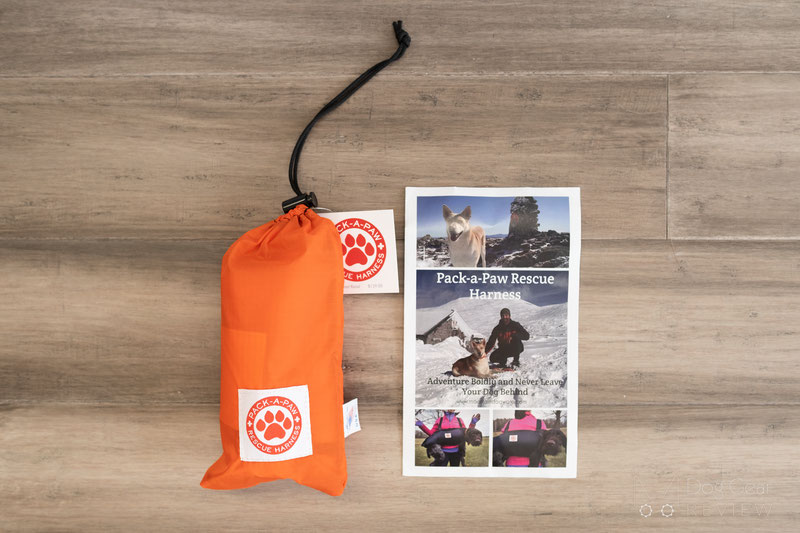
Pack-a-Paw is a one-piece sling with four holes for the legs. Initially setting up the straps is a little trickier than it was with the very similar Fido Pro Airlift, but once you have tried it a few times, there is nothing complicated about it. They used metal hardware instead of plastic for extra strength. The Pack-a-Paw does not have plastic buckles either that could fail.

The material is thin, lightweight, but durable with reinforcement on the edges to prevent ripping.
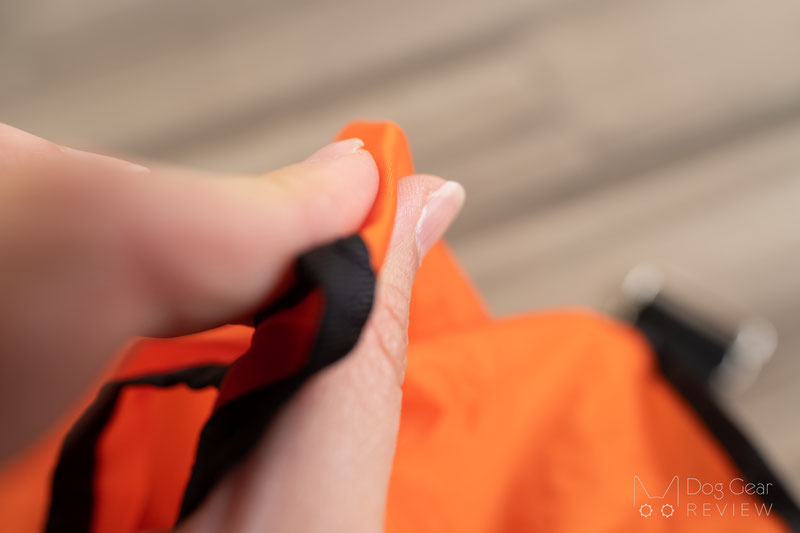
This harness can be worn front or back, and it supports a higher carry-point than most emergency harnesses. Mountain Dogware’s position is that carrying below the shoulders where a backpack would sit is generally more manageable, but that comes down to personal preference. I set the straps looser for testing and carried Mia a lower because it was easier to reward her this way. I also did not cross the straps on my chest, which would have added additional support and shortened the straps, creating a higher carry point. It was easier for these shorter testing sessions to get her up and down from my back without needing to undo and redo the straps, but I would probably cross them for an actual carry-out situation.
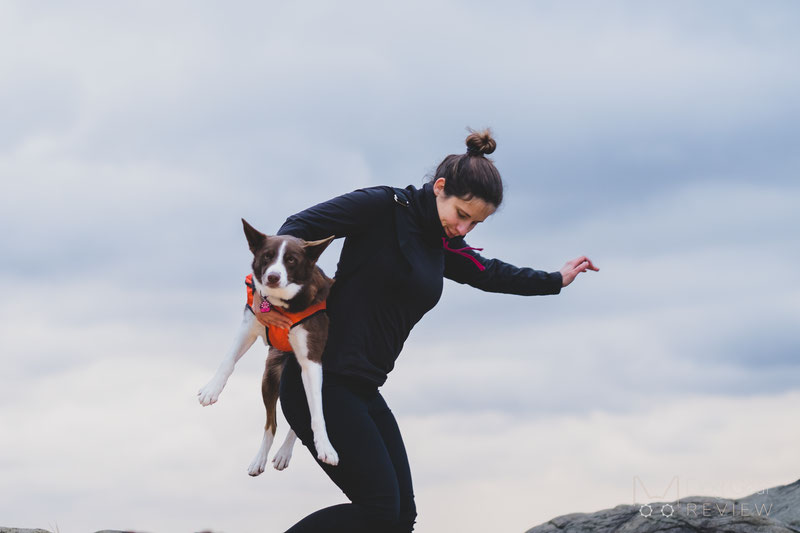
Mountain Dogware does not offer shoulder padding for the straps, but in return, the straps are pretty broad, which helps distribute the weight. The Pack-a-Paw doesn’t have a cross-chest buckle either that would prevent the straps sliding down on your shoulders but then again - they recommend crossing the straps anyway. If you decide to carry it in backpack style instead of crossing the straps, they slide down without holding onto them.
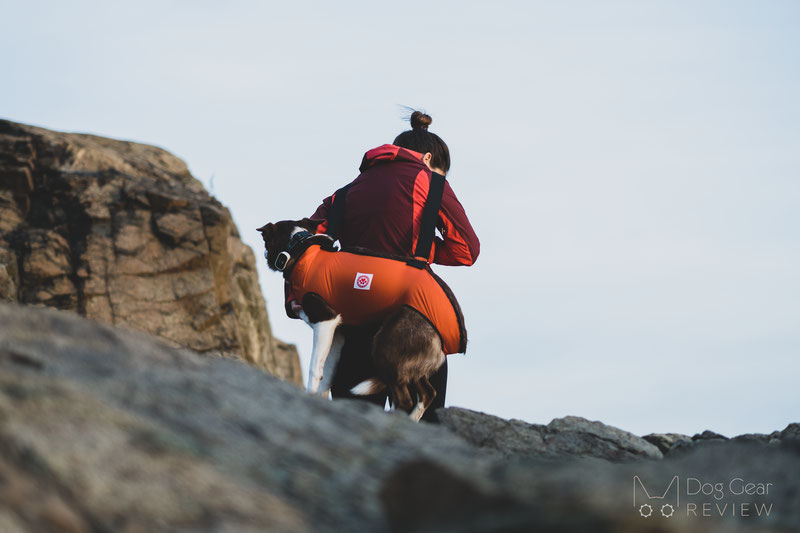
Pack-a-Paw Rescue Harness Review
The straps don’t come ready to use, so it is highly recommended to watch their videos explaining how to set them up properly. I will link the video here separately as well because I know some people had trouble starting them from the website.
After watching the videos, it’s also recommended to set them up at home a few times, so one is familiar with the process in a real emergency. After doing all this, the first time, I still managed to put it on Mia the other way than supposed to. Their guide has a photo where the dog faces to the right while the logo is visible.
If you make the same mistake, it will look like this: (which is NOT how it is supposed to look)
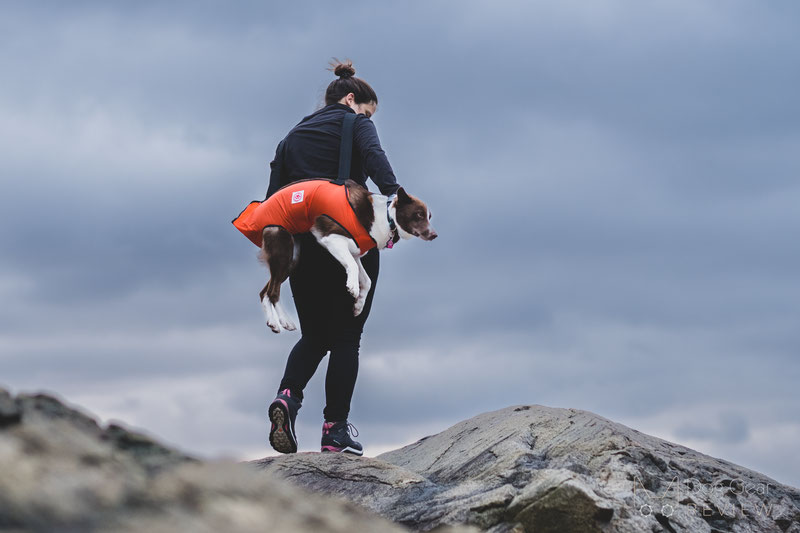
The most straightforward way to remember how it should be is to always put the back legs into the bigger holes on the sling. Then, the neck/chest area should look like this instead of the awkward fit on the previous photo:
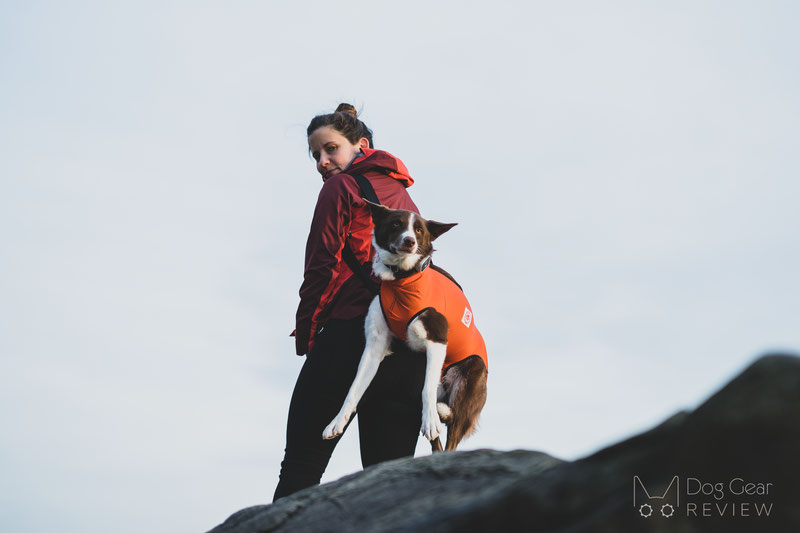
In general, the advantage of having a one-piece sling is that it can be quicker and easier to put on the dog since you don’t need to figure out settings, buckles, adjustments. The disadvantage is, of course, the lack of adjustment in case it doesn’t fit your dog well. The other issue is that it is hard to put on a dog who cannot stand or has an injured leg, and it can potentially cut the circulation in the legs.
A difference in design compared to the other harnesses is that the straps go through a metal loop on the sling, so when you lift the dog, it “pinches” the sling together, creating a tighter fit around the dog than the other options. This might be an issue with some injuries if you prefer the sling not to tighten around the dog. On the other hand, the dog might be more secure in this if you have to climb down on steep terrain.
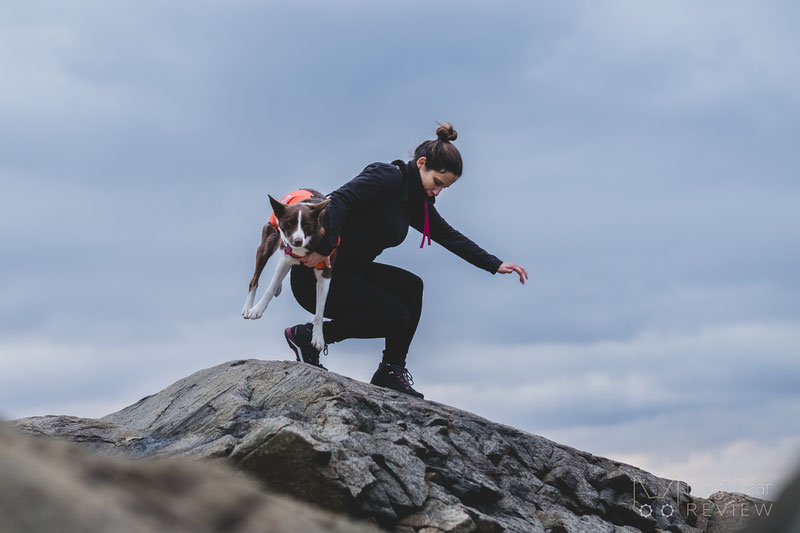
How Should a Rescue Harness Fit a Dog?
As far as I’m aware, there aren’t any researches on the ideal weight support for dogs in these carry harnesses, so I asked Dr. Landry’s opinion on how they should fit a dog.
I was mainly concerned about the chest section sitting over Mia’s shoulders. This would be a problem with regular harness designs, but Dr. Laundry wasn’t concerned about it since the weight distribution is pretty even across the dog - most of the weight-bearing section being in the middle of the dog’s body anyways. The role of the neck/shoulder section is primarily to stop the dog from sliding out.
Dr. Landry raised an interesting point that I hadn’t considered before. Having the front section fit higher on the neck keeps the dogs securely in the sling, but it could cut the circulation if the dog is unconscious or just hanging its head for any other reason.
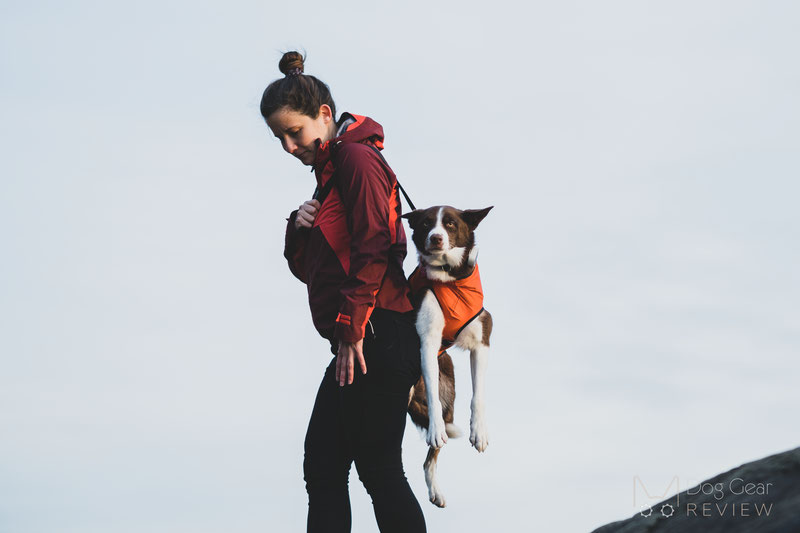
How Does the Pack-a-Paw Compare to the Other Dog Rescue Harnesses on the Market?
The Pack-a-Paw has the most closed design compared to its competitors (the The Back Country and the Airlift). This helps provide excellent support but also has a higher chance of cutting the circulation around the neck (in case of an unconscious dog) or around the back legs if used over a longer period. The front leg holes are also the smallest across the four carry-out systems we tested, making it hard to fit some dogs into it.
The straps - especially if you cross them on your chest - allow for a higher carry point than most other harnesses, which might or might not be an advantage compared to your preferences.
The packability of this rescue set is incredible and makes having it in your backpack a no-brainer.
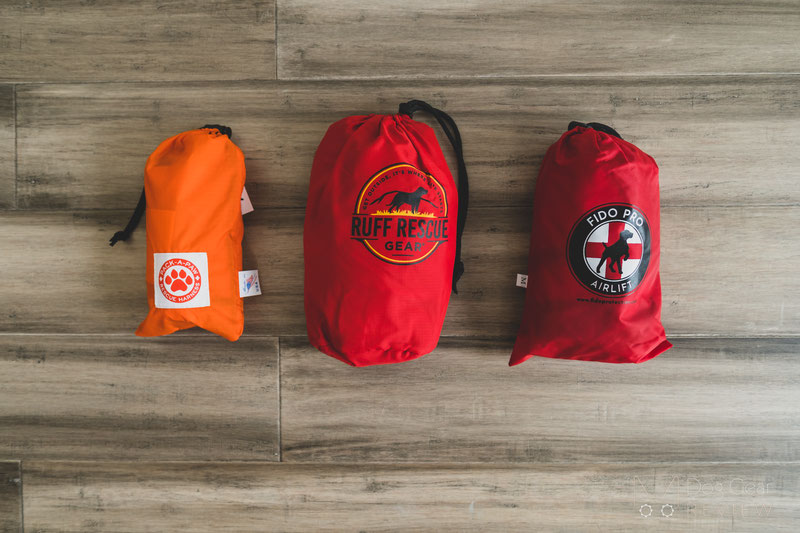
Review Summary
Altogether the Pack-a-Paw provides excellent support around the torso, and the closed neck and back design ensure that the dog cannot slide out from it. Mia didn’t really like the “squeezing” feeling caused by the free-sliding straps, but that’s probably something she would quickly get used to.
The setup process can get confusing, especially without practice, so keep the instructions in the bag for guidance. If used over an extended period, be sure to stop regularly and check the circulation in the legs.
Where to Buy
You can find more information on Pack-A-Paw on Mountain Dogware’s website and buy it in their shop.
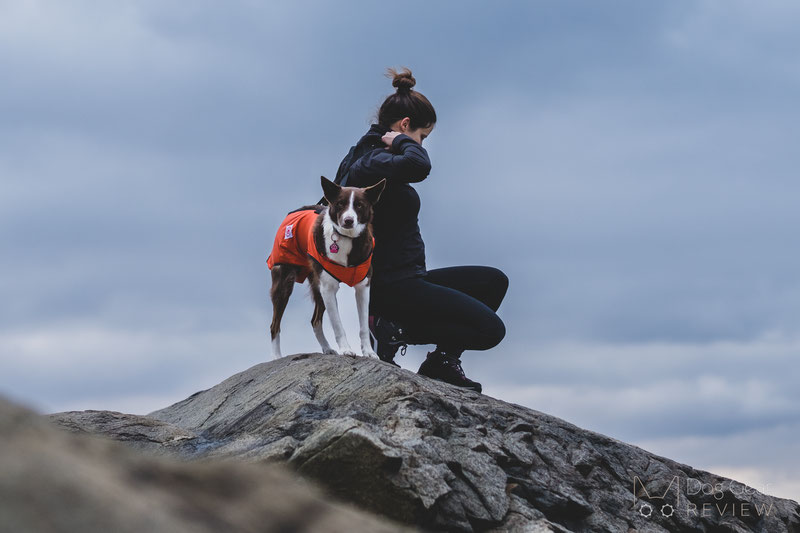
Mia’s measurements
Many of you asked Mia’s measurements to better understand the different products’ fit. Your best chance of finding a good fitting gear is always to measure (and remeasure) your dog. Even we grab the measuring tape before getting a new product - even though we tested a lot of them, and have a good feeling of her size by now.
I share her measurements below, but don’t go ahead and order the same size just because your dog is similar to Mia ;)
Shoulder height: 19.5 inches (50 cm)
Weight: 37-44 pounds (17-20 kg)
Widest chest circumference (where the most harness would have the chest strap): 25-26 inches (63-65 cm)
Neck circumference for collars: 15-16 inches (38-40 cm)
Back lengths: 22 inches (56 cm)

